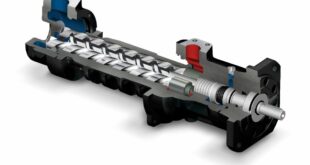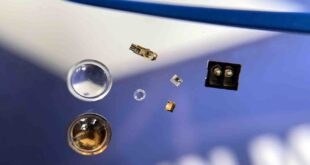Jan Bart Picavet explores the advantages and benefits of anisotropic conductive film
Hot bar anisotropic conductive film (ACF) bonding is a universal interconnection technique found in most digital devices. It is an optimal interconnection method for creating electrically conductive adhesive bonds between flexible and rigid circuit boards, displays, LEDs, sensors, cameras, and flex foils. This bonding process is used to connect displays to printed circuit boards in everything from flat-panel TVs to smartphones and smartwatches.
Hot Bar ACF Bonding is extremely reliable and offers high-performance functionality at the point of connection. It’s also suitable across a broad range of applications, making it a versatile bonding solution to invest in. When compared to other bonding techniques, it benefits from relatively low cost, while offering manufacturing process that is robust and simple to implement. Let’s have a close look at the benefits of ACF Bonding.
1. Miniaturisation. ACF is well suited for the continuing trend of miniaturising devices. ACF Bonds require no height and significantly less space compared to the common mechanical methods such as zero insertion force (ZIF) connectors and board-to-board (BTB) connectors. By using ACF, the entire interconnection can be downsized to fine pitch, as small as 30 microns. The pitch is the distance from the centre of one pin/tab to the centre of the adjacent one.
2. Reliabilities. ACF Bonding is a well-established and time-tested technology that has demonstrated its reliability for decades. Originating in the 1970s, it has consistently proven its dependability across diverse applications and environments. Heat cycle tests demonstrate that conductive resistance remains low and stable at temperatures from -40℃ to 100℃, and ACF interconnections will withstand drop tests that may cause failures of mechanical connectors.
3. Flexibility. A highly versatile method, that enables the interconnection of components with different materials, profiles, sizes, and even curved surfaces. It can be positioned at the edge of a board, maximising usable board space and aiding miniaturisation. ACF is suitable for connecting flexible printed circuits (FPC) to glass and substrates that have slight unevenness, such as ceramic materials, keeping costs down whilst achieving reliable joints.
4. High Speed Transmission. ACF Bonding can handle high-speed transmissions with low data loss, and the fine-pitch conductivity still offers the high current capacity and transmission speeds required for 5G communications. Safe to say, it ensures an excellent electrical connection.
5. Lead Free and Low Temperature Process. Moreover, it is lead-free, making it suitable for most applications. There is no cleaning required (from FLUX residue) and solder bridging problems are eliminated, resulting in a cleaner manufacturing environment and higher yield. The low process temperature makes ACF Bonding well-suited to materials with low heat resistance such as PET/PEN.
6. Cost effective. Connectors can be expensive. In some cases, 10 times the cost of ACF film. Therefore, it can be said that ACF Bonding is very cost-effective. Moreover, ACF is easier to automate, resulting in further cost reductions and productivity improvements. The output quality of the automation is therefore better controlled. Implementing the ACF laminating/bonding process is straightforward, which is to say that many process parameters can be controlled and monitored throughout the bond.
Understanding ACF bonding
In today’s market, ACF Bonding is not just for screen-based devices. It is employed across a diverse range of new technology, including automotive in-mould electronics, LED lighting, continuous glucose monitors, electronic price tags in supermarkets and the Internet of Things.
Exploring all these benefits, it is fair to say that ACF implementation is a simple and reliable process that can be performed in any factory and is well-suited for automated assembly. ACF Bonding can be introduced to manufacturing processes within a few months, from the design stage through to mass production. AMADA’s bonding specialists offer advice on how to achieve success with Hot Bar Bonding.
Jan Bart Picavet is Product Manager Hot Bart Technology, AMADA WELD TECH Europe.
 Engineer News Network The ultimate online news and information resource for today’s engineer
Engineer News Network The ultimate online news and information resource for today’s engineer




